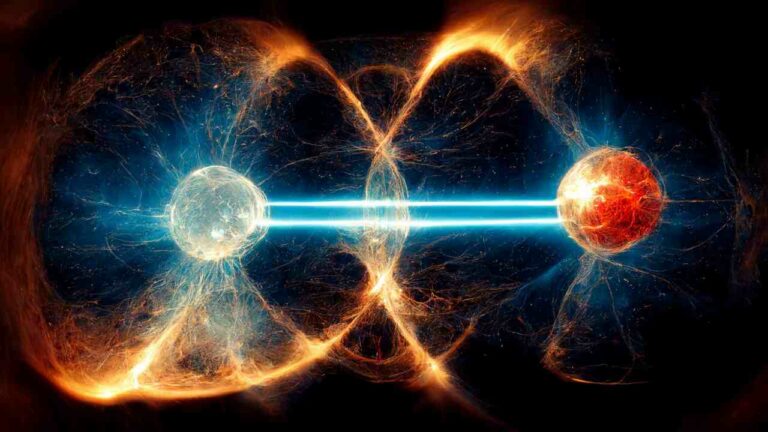Researchers have successfully established a strong connection between quantum entanglement and topology.
The authors have managed to show the ability to manipulate two spatially separated quantum entangled particles that are connected in some way but remain intact. The team included, Professor Andrew Forbes, from the Structured Light Laboratory at the University of the Witwatersrand, South Africa and a string theorist, Robert de Mello Koch at Huzhou University, China. This groundbreaking achievement was made possible through the acts of trapping two photons into one and rewriting their topology when taken as a single entity.
This experimental work was published in Nature Photonics on 8 January 2024, and it describes the quantum entanglement, where the measurement outcomes of two particles are correlated even if they are separated by a large distance. The idea of topology, which is brought out in this study, is something like bending a coffee mug into a doughnut while the topological feature stays the same as the entangled photons in this experiment.
The Skyrmion topology, established by Tony Skyrme in the early 1980’s is based on the field configurations resembling the particles. In this regard, topology is an attribute of fields similar to a piece of fabric; its structure (the topology) is the same no matter which way the force is applied (the wave-function).
These ideas have been incorporated into modern magnetic materials, liquid crystals and optical analogs employing classical laser beams. Skyrmions have been appreciated in condensed matter physics for their stability and robustness against noise resulting in improvements of high density data storage medium. Forbes predicts that, like the quantum-entangled skyrmions described by Forbes, transformation will happen as well.
While previous research depicted Skyrmions as localized entities, recent work reveals a paradigm shift: Whereas once upon a time, topology was single and local, the new topology is nonlocal or shared by spatially distant participants, as Ornelas states.
Other researchers employ topology to categorize entangled states; as a labeling system like alphabet is proposed by Dr. Isaac Nape, a co-investigator.
Nape further states that like spheres, doughnuts, and handcuffs where one is characterized by the number of holes as the other, the quantum skyrmions can also be characterized based on their topology features. The team believes this strategy will pave way for new quantum communication using topology as the basis for processing quantum information using entanglement channels.
The results of this article have implications since it was for a long time a challenge for scientists to develop approaches for maintaining entangled states. The intact topology even though the entanglement has degraded suggests the possibility of a fresh method of encoding that would optimally make use of entanglement where entanglement is scarce or actually inadequate.
According to Forbes, “Ours studies will focus on implementing these novel protocols and expanding the horizons of topological nonlocal quantum states.
Version 1: It is important to underline that the results that the authors of the article present are important since scientists have been working on the problem of preserving entangled states for several decades. The continued integrity of topology as entanglement fades suggests what could be an entirely new context called entanglement-based encoding even in cases of little or no entanglement where other traditional forms of encoding would not hold.
That is why further attention will be paid to the efforts to define these new protocols and describe the new area of topological nonlocal quantum states.
Reference:Pedro Ornelas et al, Non-local skyrmions as topologically resilient quantum entangled states of light, Nature Photonics (2024). DOI: 10.1038/s41566-023-01360-4
Do not forget to share your opinion with us to provide you with the best posts !




0 Comments